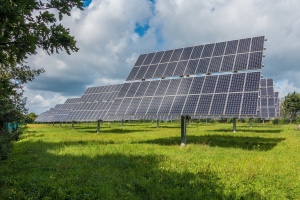
New Delhi: India has already achieved emission reduction of 28% over 2005 levels, against the target of 35% by 2030 committed in its NDC (Nationally Determined Contributions). This makes India among one of the few countries globally which has kept to its Paris Climate Change (COP21) commitments along with an exponential increase in renewable energy capacity.
Union Minister of Power and New and Renewable Energy, and President of International Solar Alliance, RK Singh also said the Indian Power Sector has achieved the milestone of 100 GW of installed Renewable Energy Capacity. He added that India plans to continue this momentum in the clean energy sector by systematically scaling up its targets to install 450 GW of renewable energy capacity by 2030 from its existing target of 175 GW by 2022.
While 100 GW of capacity has been installed and operationalized, he informed that 50 GW of additional capacity is under installation and another 27 GW is under tendering process. As on July 31, 2021, 38.5% of India’s installed power generation capacity is based on clean renewable energy sources and with this pace we will reach the target of 40% by 2023. Presently India stands at 4th position in the world in terms of installed RE capacity 5th in Solar and 4th in Wind energy capacity.
“Considering the pace of development in the energy sector, India is determined to not only achieve, but to exceed its NDC commitments well within the committed time frame,” Singh said in his keynote address at the ‘INDIA-ISA Energy Transition Dialogue 2021’ organized by the International Solar Alliance (ISA) and the Union Ministry of New and Renewable Energy (MNRE), here yesterday.
Singh underlined that from time-to-time, the Government of India has enacted favourable polices and regulations to boost the clean energy sector. “India has been aggressively pushing for energy efficiency improvements for the past two decades through a combination of innovative market mechanisms and business models, institutional strengthening and capacity building, as well as demand creation measures,” he said.
The Minister further added that the key is to allow the regulatory and policy support to keep the sector afloat till the supply-side strengthens, technology develops, and competitive market takes root resulting in a fall in prices, and the industry becomes self-sustainable.
He said that it is anticipated that by 2050, 80-85% of India’s overall power capacity will come from renewables. India has already touched 200 GW of peak demand.
“The demand had crossed what it was during pre-COVID time and it is expected that electricity demand will continue to rise. This gives us the space for adding more renewables capacity, but it will call for power system flexibility and introduction of various storage technologies,” he said.
– global bihari bureau





